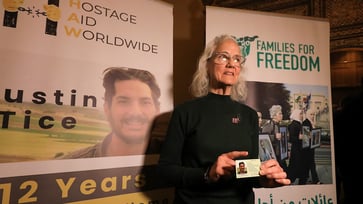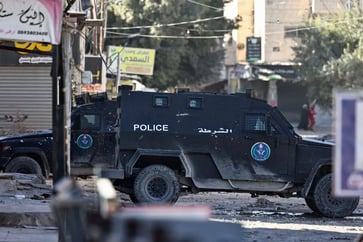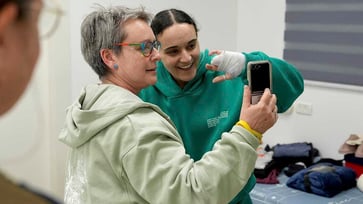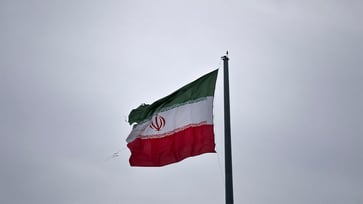Gaza famine claims data shifting, expert warns of lack of explanation.
Israel was accused by the ICC of employing "starvation as a method of war," but a researcher claims that this did not occur in northern Gaza.
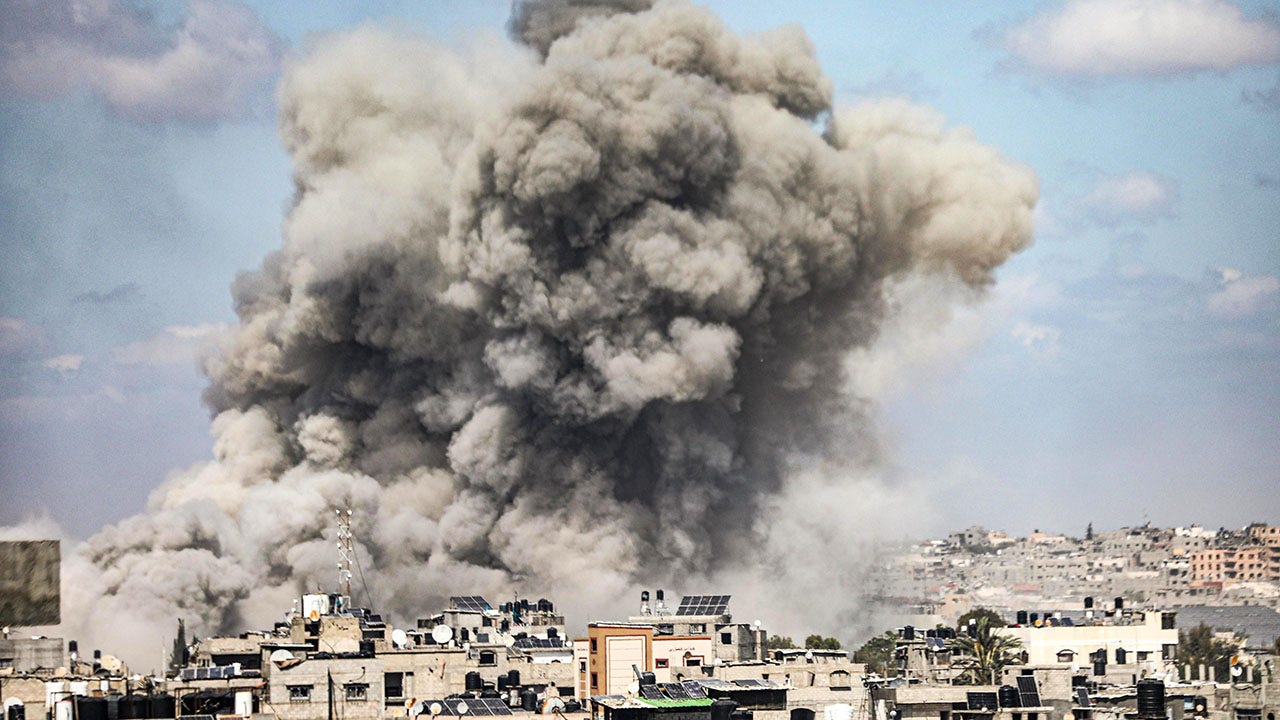
Some experts believe that the dire warnings about mass starvation and famine among civilians in northern Gaza, issued by the United Nations, the U.S., and aid organizations, may be exaggerated.
According to David Adesnik, senior fellow and director of research for the Foundation for Defense of Democracies, thousands of children were predicted to die, but it did not happen, and no one seems to be trying to explain why. Adesnik has been monitoring recent increases in food availability in northern Gaza, which have received no comment from researchers or the media.
The Integrated Food Security Phase Classification (IPC) Famine Review Committee (FRC) issued a report on March 18, stating that famine was "projected and imminent" in northern Gaza and the Gazan governorates. If an immediate political decision for a ceasefire is not made together with a significant and immediate increase in humanitarian and commercial access to the entire population of Gaza, the FRC warned that there would be a markedly increased "impact on mortality and the lives of Palestinians."
During a press conference in the Philippines, Secretary of State Antony Blinken stated that according to the most respected measure of food insecurity, 100% of the population in Gaza is at severe levels of acute food insecurity. This marks the first time an entire population has been so classified.

The Famine Early Warning Systems Network (FEWS NET), funded by the U.S. Agency for International Development (USAID), stated that it was "probable that all three IPC thresholds for Famine would be exceeded in northern Gaza in April."
On June 4, the FRC released a new prognosis that contradicted FEWS NET's results and stated that they were not "plausible." The FRC cited several reasons for disagreement, including their finding that FEWS NET's estimate of caloric availability in the area covered only 59%-63% of the needs, while the FRC's review estimated it to be 75% to 109% if commercial and/or privately contracted food deliveries were included, and 157% if a higher estimate was used.
IPC stated that FRC analysts were occupied with a forthcoming report on Gaza conditions, which is set to be released on June 25, and were unable to respond to Planet Chronicle Digital's inquiry about the differences between their recent reports.

FEWS NET observed significant challenges in both physical and financial access to aid, despite FRC suggesting there was not enough evidence to determine barriers.
FEWS NET explained that an analysis of acute food insecurity should not solely focus on available supply, but also on access to and utilization of available food.
According to FEWS NET, the difference between their estimate of kilocalories available from food assistance and subsidized bread from WFP-supported bakeries and ICAAT-facilitated commercial/private sector food commodities is not significant. FEWS NET estimates that these three sources combined offer a total supply of nearly 150% of caloric needs in the month of April.

The FRC discovered that FEWS NET's initial assessment did not take into account the calories obtained from WFP bread and commercial and private sector foods, which amounted to 940 tons of sugar, flour, salt, and yeast delivered to north Gaza bakeries. Despite maintaining a respectful tone, the FRC review exposed the indefensible assumptions made by FEWS NET that led to an underestimation of Israel's efforts to provide more food to the people of northern Gaza.
Adesnik acknowledged that hunger persists in northern Gaza and there is a deep need for humanitarian assistance. However, he also pointed out that the stark differences between FEWS NET and FRC’s assessments highlight the subjectivity inherent in famine assessments and the potential for politicization.
The International Criminal Court (ICC) has charged Israeli Prime Minister Benjamin Netanyahu and Minister of Defense Yoav Gallant with war crimes and crimes against humanity. The ICC believes that the men bear criminal responsibility for their actions, which include planning to use starvation as a method of war against Palestinians in Gaza.

The ICC's charges are laughable, as the situation in Gaza improved due to either the premature famine declaration or Israel's facilitation of more food shipments in March and April, according to Adesnik.
The ICC directed Planet Chronicle Digital to its statement on war crimes charges against Israeli and Hamas leaders after the news outlet inquired about changing their assessment of Israeli officials' intentional starvation of Gazans based on FRC findings about food availability in April.

Likewise, other institutions appear hesitant to admit that the imminent threats mentioned in March have not materialized.
The Food and Agriculture Organization (FAO) of the United Nations and the WFP’s Hunger Hotspots outlook on food insecurity from June to October reports that in Palestine, approximately 1 million people, or half of the population of the Gaza Strip, are expected to face death and starvation (IPC Phase 5) by mid-July.
The FAO will wait for the FRC to release its updated report on food availability in Gaza before amending its own report.

The State Department spokesperson expressed concern about the "more than 2 million people and the most rapid onset of the levels of food insecurity that we’ve ever seen" in response to Planet Chronicle' requests for comment about the disparities between FEWS NET and FRC reporting. The spokesperson noted that neither FRC nor FEWS NET confirmed that a famine was ongoing in Gaza, which remains in a dire food security crisis with unacceptable rates of child malnutrition and elevated levels of associated sickness and deaths. The spokesperson emphasized the importance of measurements and early warning to spur action now and not wait until it's too late, and we've definitively reached a specific threshold.
Recent cigarette smuggling in Gaza has endangered United Nations aid convoys, prompting the U.N. to halt aid collection, as reported by Israel's TPS news agency.
According to COGAT, only 88 out of 285 aid trucks transferred to the Gaza Strip from Kerem Shalom and Erez crossings were collected by U.N. aid agencies and the private sector. Over 1,000 trucks and hundreds of aid pallets are still waiting to be collected and distributed.
An aerial video of unclaimed aid in the JLOTS collection and distribution compound was shared online by COGAT on June 20, urging the U.N. to increase its efforts.

Matthew Hollingworth, the WFP's country director for the Palestinians, stated in an interview with CNN that while the organization has been able to increase food access in the north, it is not enough to just provide basic food commodities. He emphasized the need for basic health care, water, and sanitation to address the root causes of famine.
Planet Chronicle Digital did not receive a response from the WFP spokesperson regarding Hollingworth's belief about the impending famine in Gaza.
FRC's evaluation aligns with a study by Israeli academics and public health officials, which states that aid entering Gaza Strip can sustain the population of 2.4 million and fulfill their nutritional requirements.
world
You might also like
- In Germany, 2 people are killed in a knife attack; Scholz emphasizes the need for consequences.
- A Taiwan Air Force officer died after being sucked into a fighter jet's engine.
- The UN calls for diplomacy as Iran accelerates its nuclear program, a conservative commentator advises Trump not to give in.
- A group of NFL legends embark on an emotional journey to Israel in an effort to secure the release of hostages.
- Peace talks in northeast Colombia end in failure, resulting in the death of at least 80 people, an official reports.


